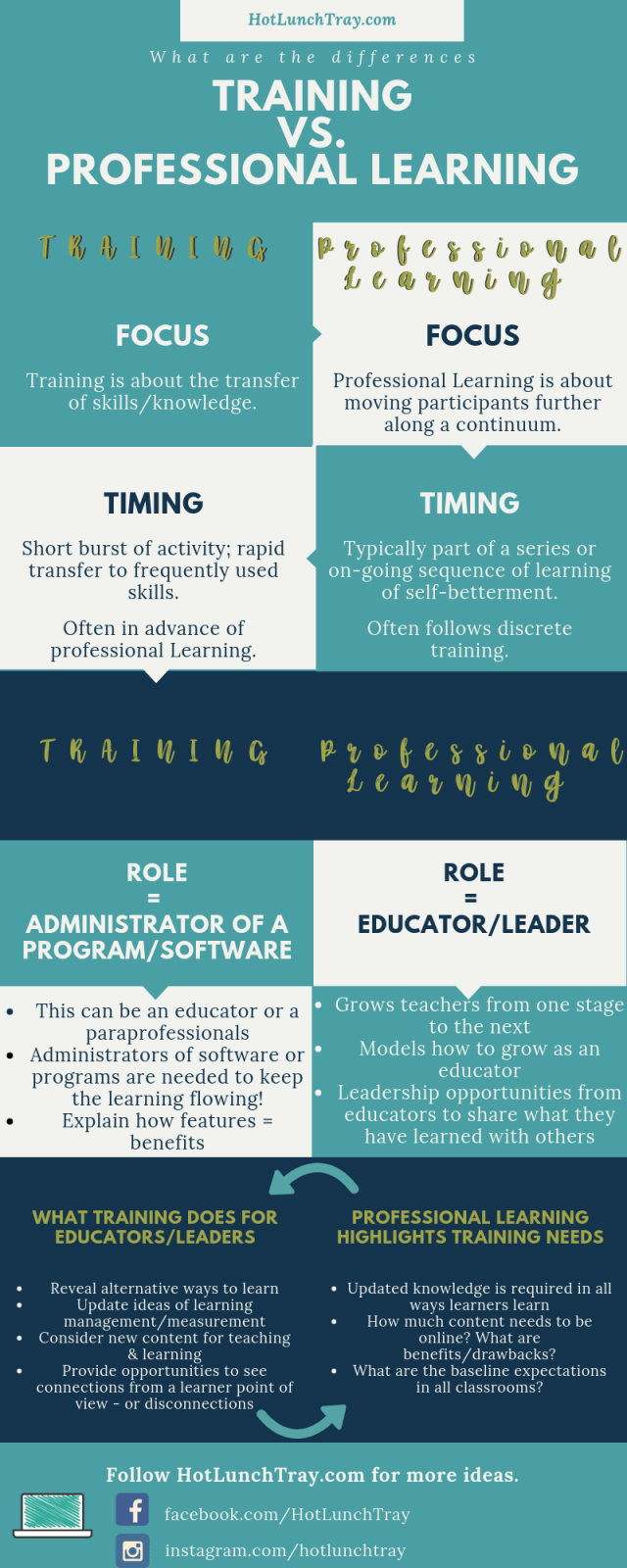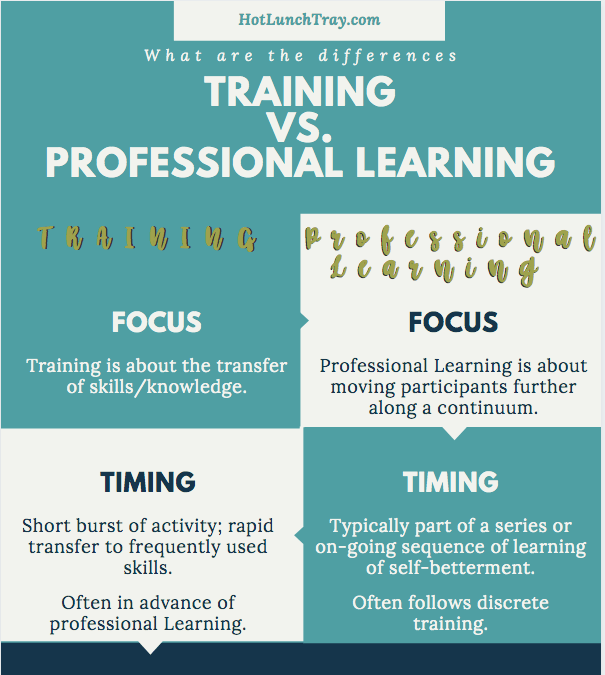What kind of Sophie’s Choice is training versus professional learning supposed to be?
I do not think you need to choose one over the other.
An Either/or Choice
Why would you give one up for the other? Training and professional learning are mutually beneficial.
Training is when I learn about a tool. I learn about the features of the tool. I learn about the benefits of using a tool this way or that way; I learn how I can use the tool to create different opportunities for me or my learners. I allow the trainer to guide me through the instrument they know so well. I am not critically evaluating the reasons behind uses yet, I am taking in all possibilities and functions without assigning a value. Training is knowing where to find, or how to do, something using the tool.
Professional learning is when I critically receive new pedagogical strategies through the lens of my teaching beliefs, student data, or a school initiative. Professional learning is when I evaluate new ways to present content which is developmentally appropriate, efficient, and avoids building misconceptions in my students.
Training focuses on technology, where professional learning focuses on pedagogy and content. Training and professional learning working together is how teachers can fully develop in Technological Pedagogical Content Knowledge or TPACK (Koehler, 2017).
One At A Time
There was a reason I taught my science students how to use lab equipment before we participated in an actual lab. I wanted their undivided attention, in each instance, to different goals. Each phase has different objectives, different goals, and yields different outcomes.
Sometimes participants are offered training embedded within professional learning. This may be a successful experience in some instances, but I am hesitant to ask participants to switch tasks too many times.
“participants lost time when they had to switch from one task to another. As tasks got more complex, participants lost more time. As a result, people took significantly longer to switch between more complex tasks. Time costs were also greater when the participants switched to tasks that were relatively unfamiliar. They got up to speed faster when they switched to tasks they knew better.” (American Psychological Association, 2006)
If combining training with professional learning is intended to save time consider the mental cost of task switching as well.
Consider if the training needs to come in advance of any professional learning. Some like to set the case for learning something new and then introducing the training within professional learning. If you follow this pattern consider providing markers for when the audience goals are changing and allow time for the participants to adjust to differing goals.
“Training is the “WHAT,” the technical introduction to a technology required before the “HOW” of professional development happens around integration into the learning process. Often the training is a short burst of information throughout the professional learning, but sometimes it is a prerequisite to professional learning.” {READ: Differentiation in Training}
Is One is Better?
False choice. Each serves different purposes.
Neither should be the only option for educators or leaders. To challenge those who seek out only to reinforce their strongest aspects, some minimums may exist, but in general, participants of choice are better learners. Gill explains the difference between a training culture and a learning culture.
“in a learning culture, responsibility for learning resides with employees, managers, and teams. In that kind of culture, employees are expected to seek knowledge and skills and apply that learning when and where it is needed” (Gill, 2017)
Essentially, waiting for professional learning or training to implement a program or try software is the opposite of the desired outcome. The desired outcome is that every educator seeks out the knowledge they need to create optimal learning environments. And that both training and professional learning are ways to achieve that outcome.
References
Gill, S. (2017, December 08). From a Training Culture to a Learning Culture. https://www.td.org/insights/from-a-training-culture-to-a-learning-culture
Multitasking: Switching costs. (2006, March 20). https://www.apa.org/research/action/multitask
Koehler, M. (2017, June 09). TPACK Explained. https://matt-koehler.com/tpack2/tpack-explained/






1 Pingback